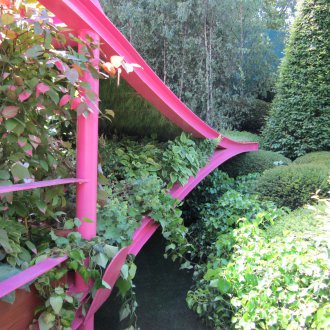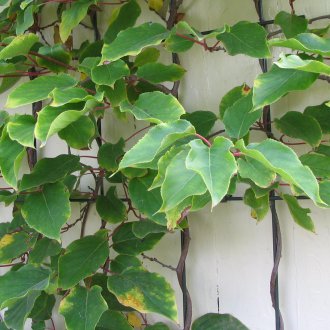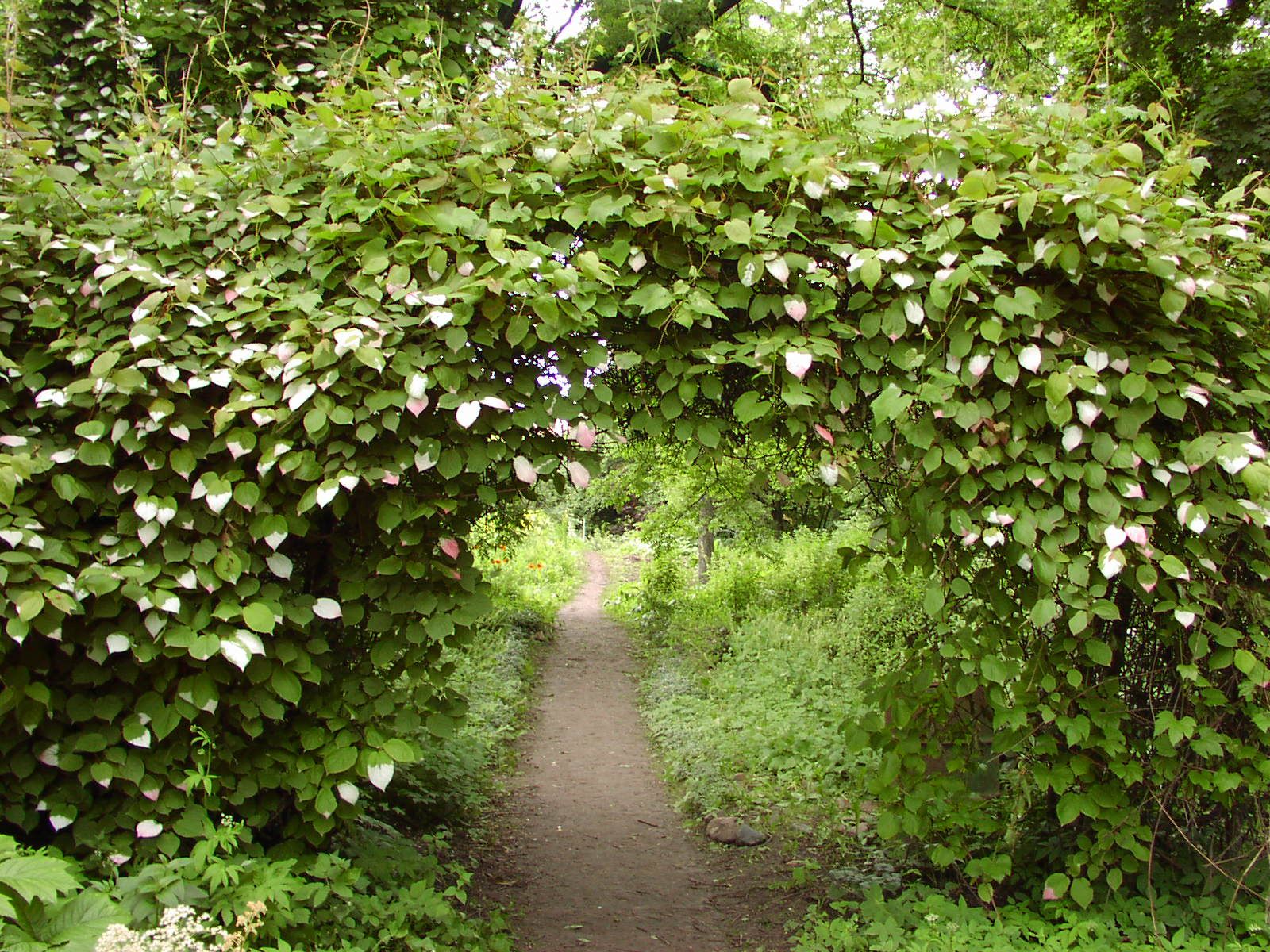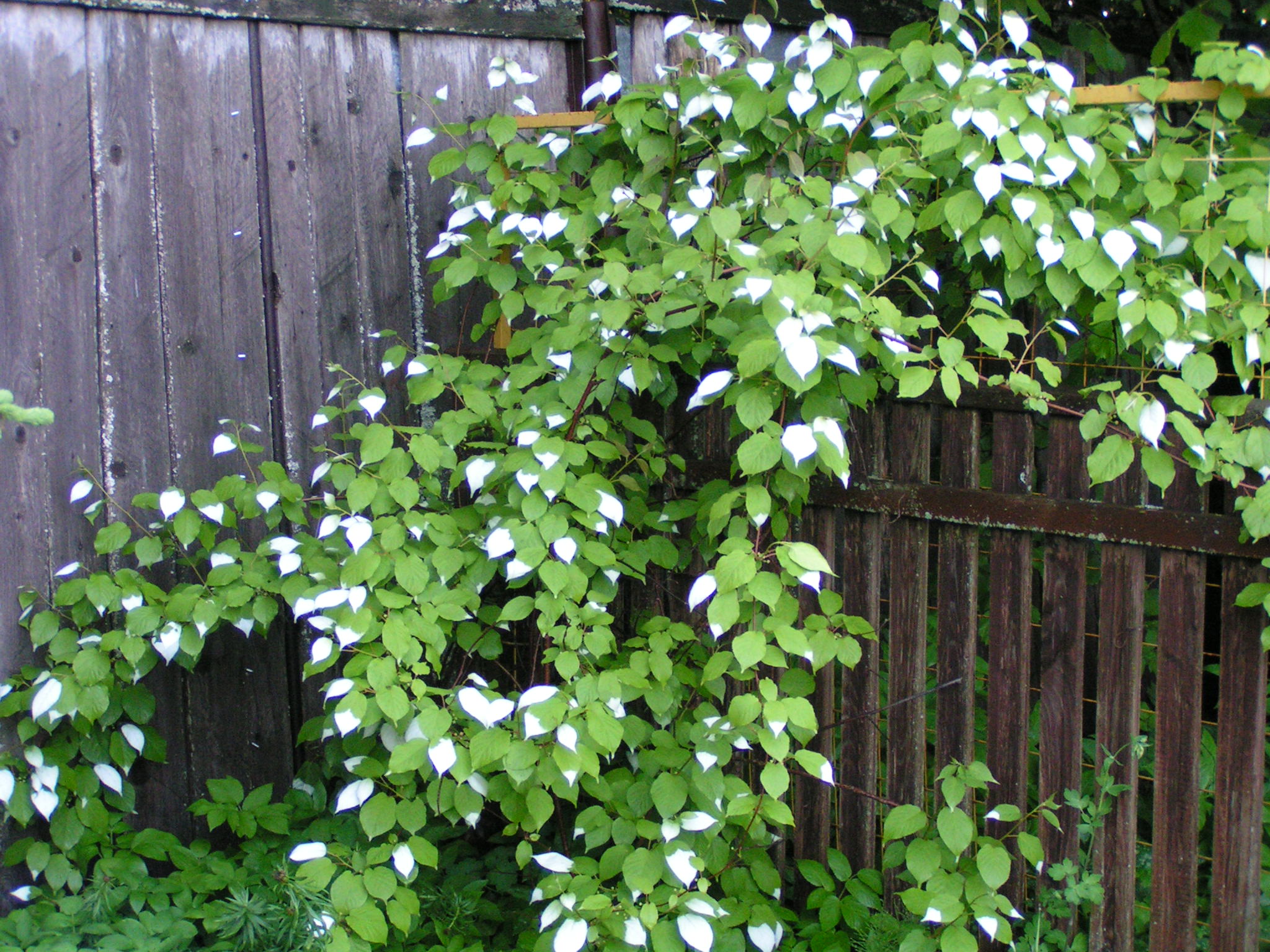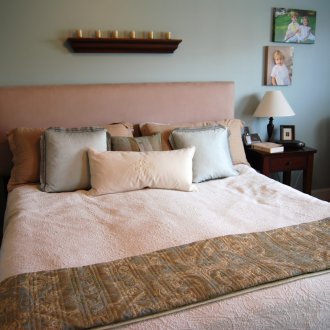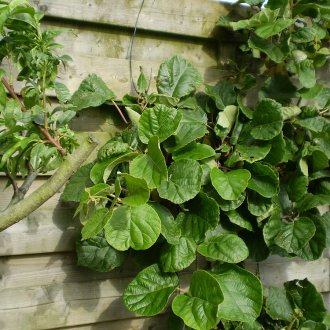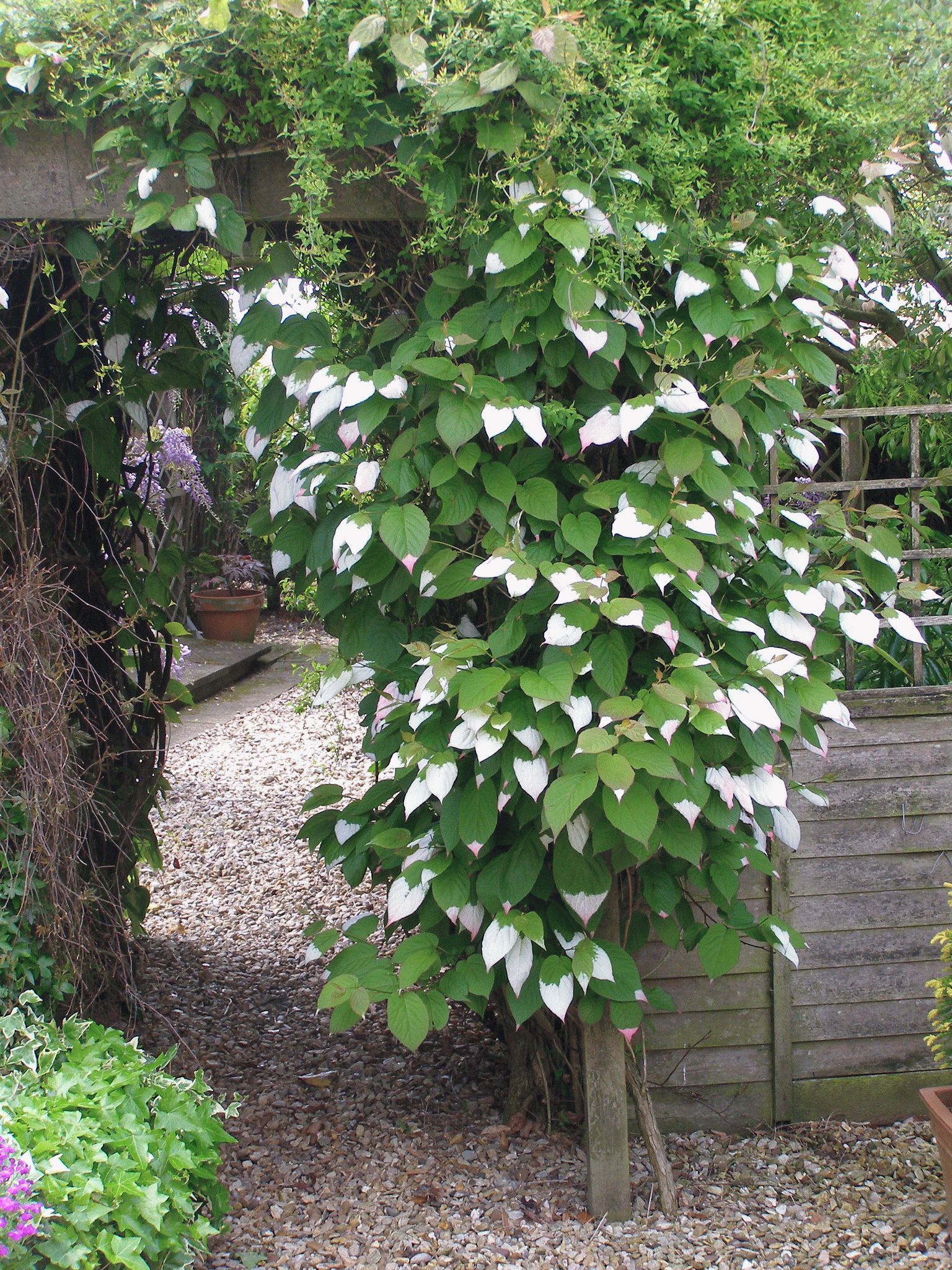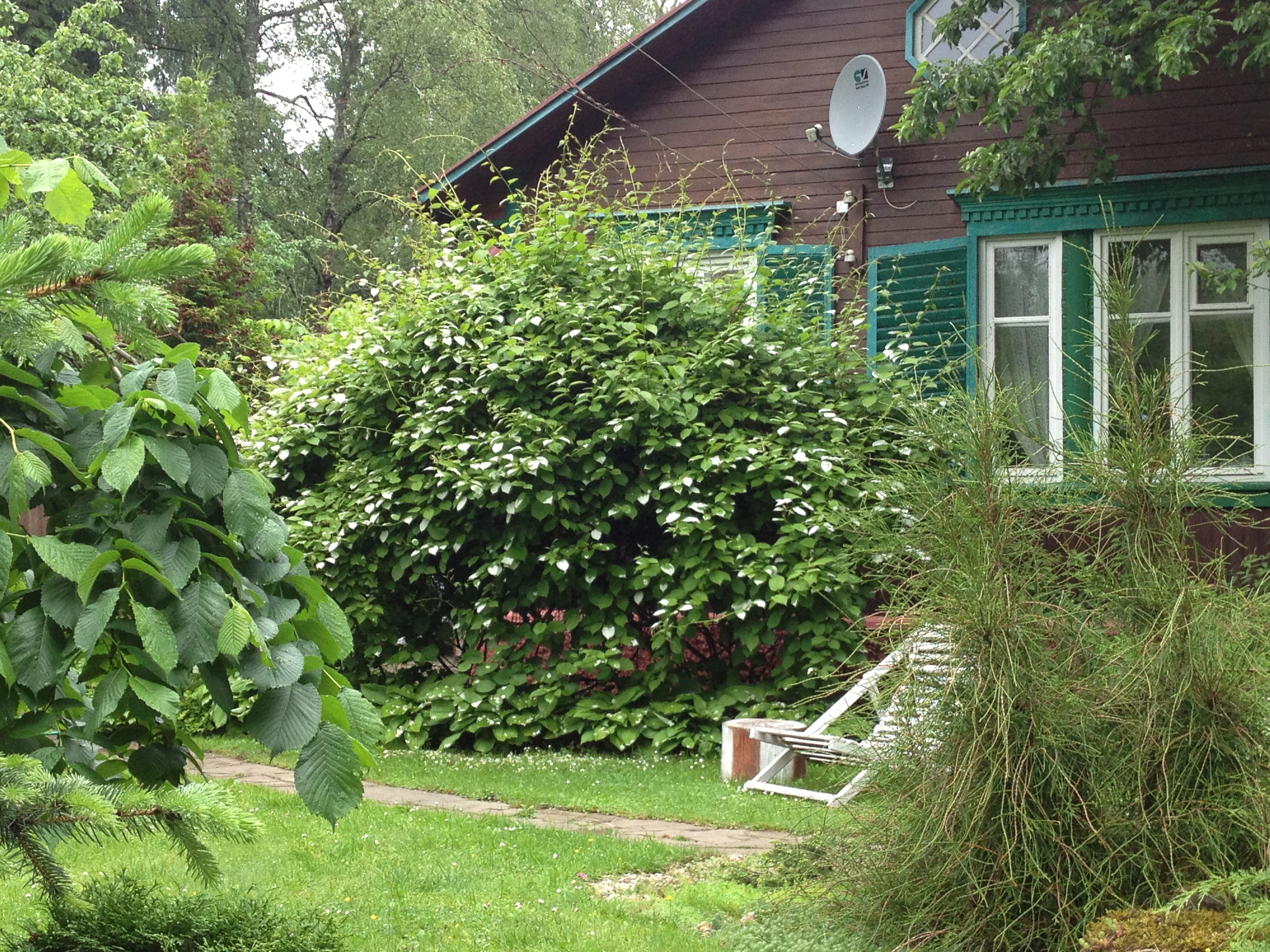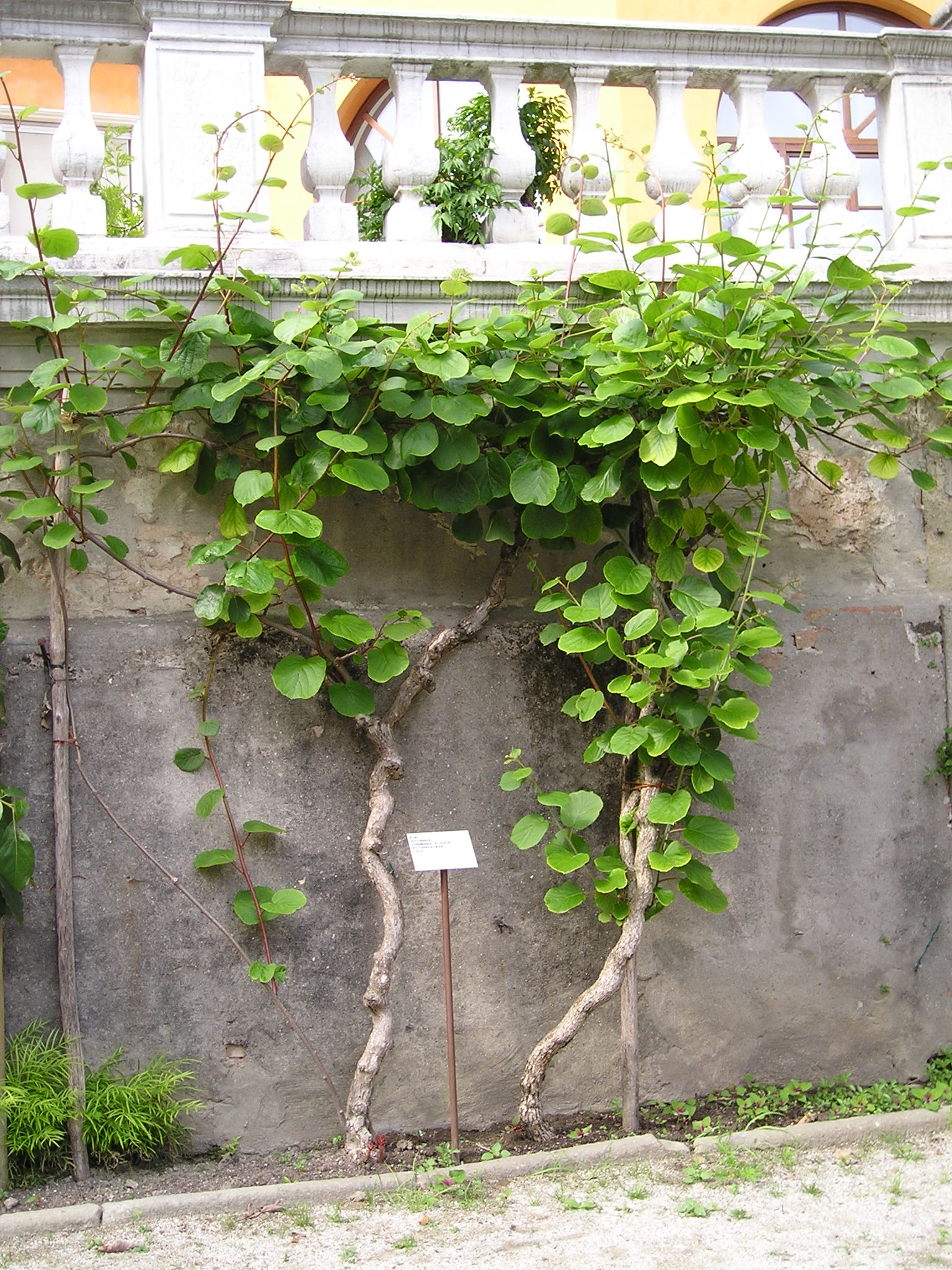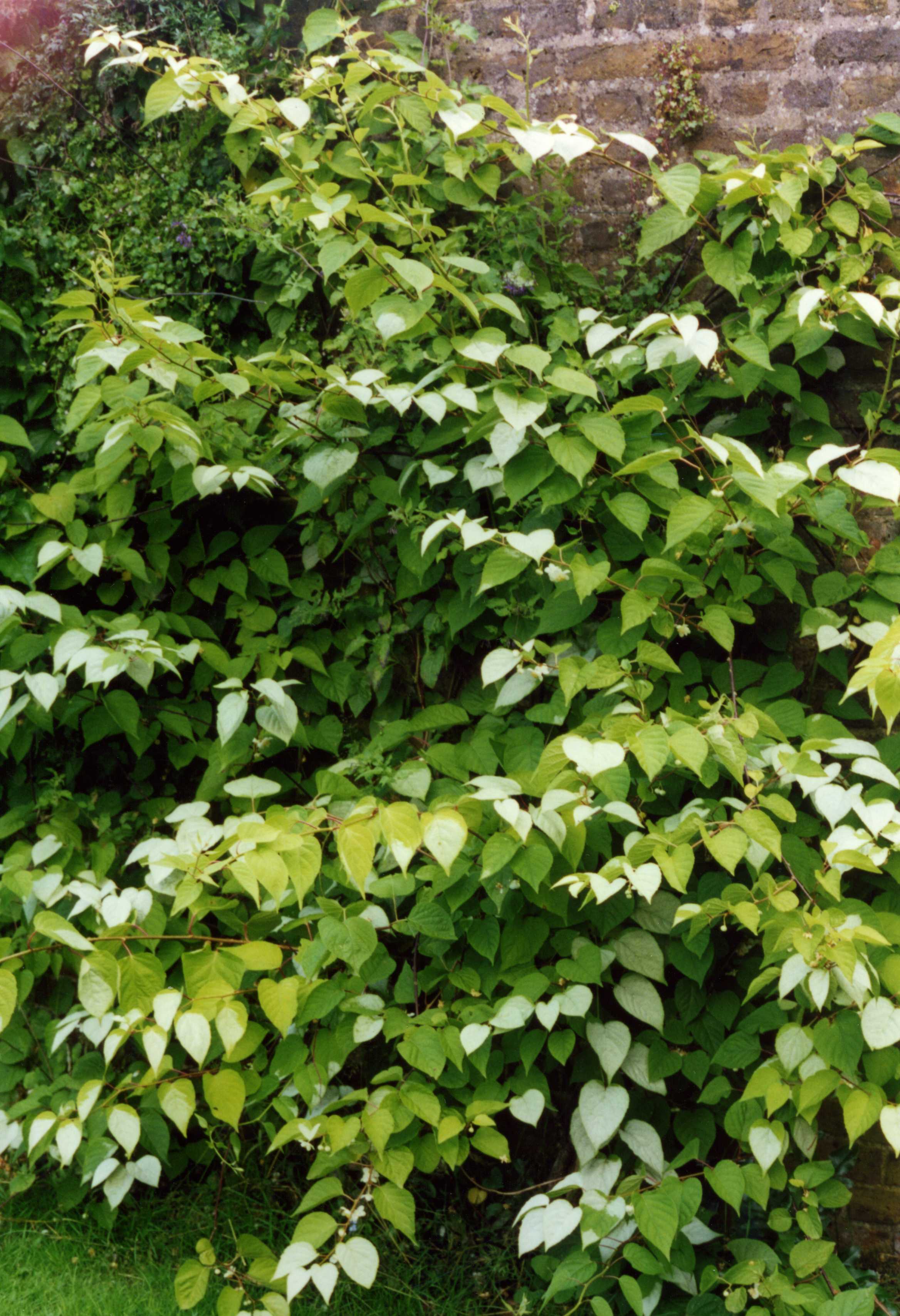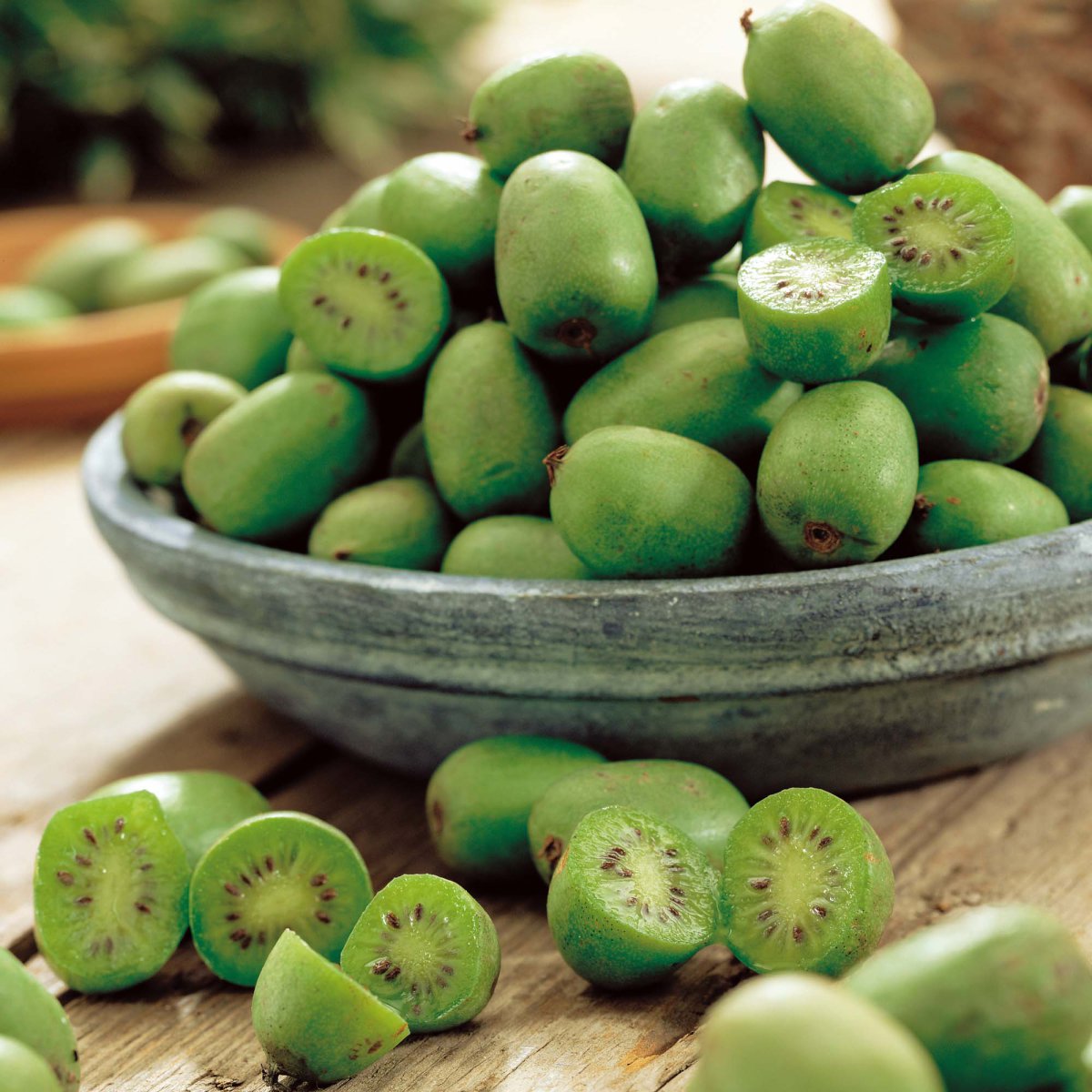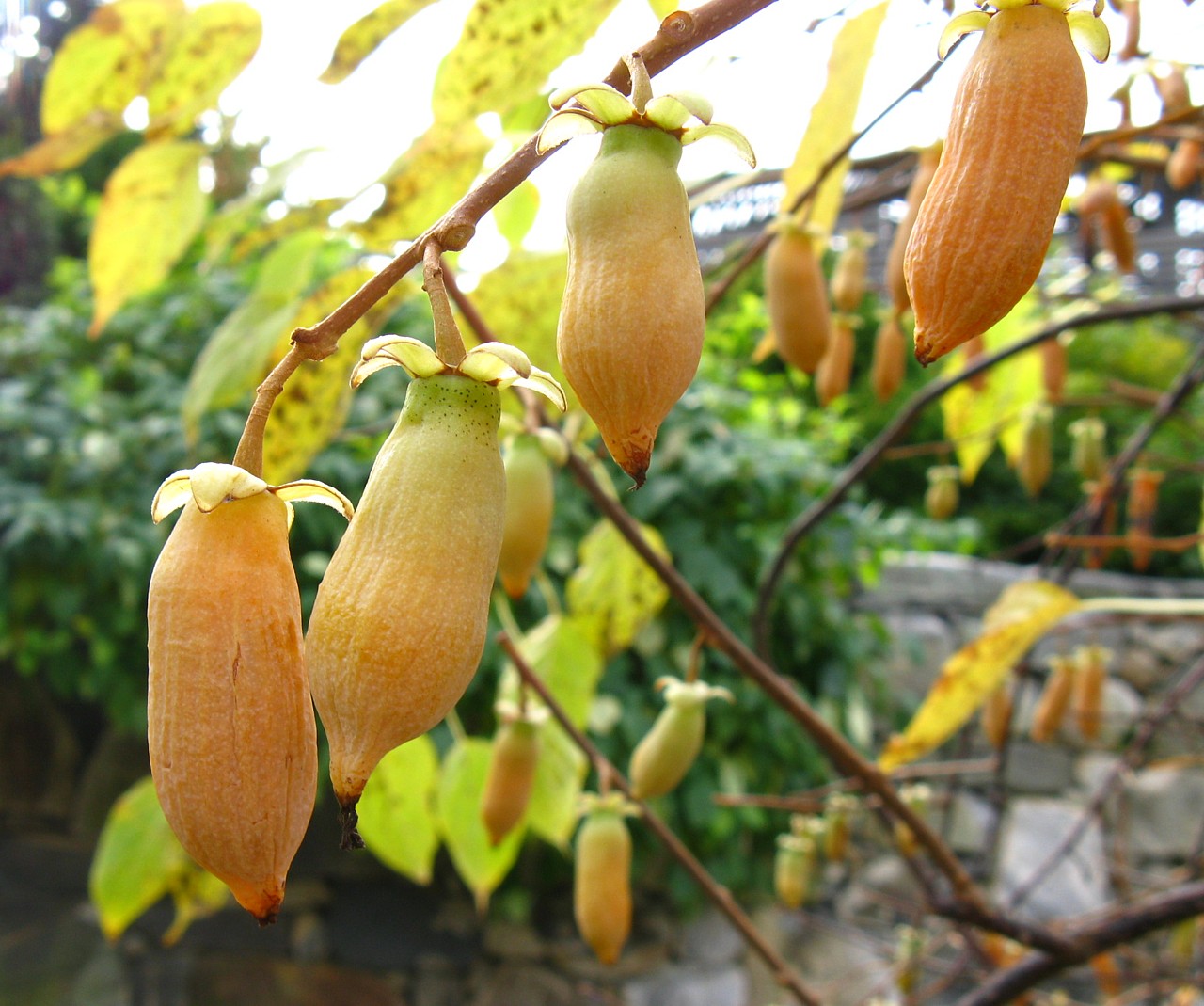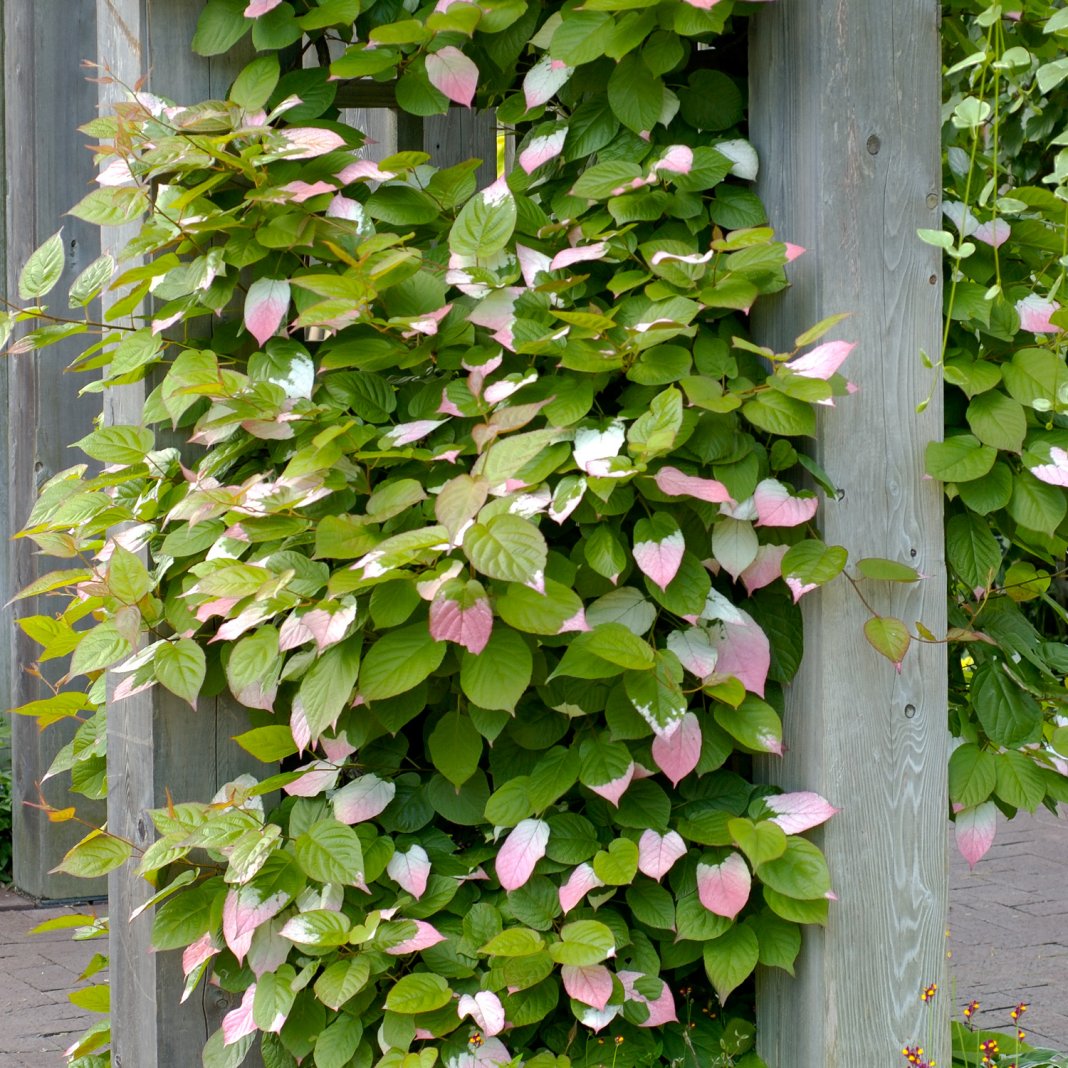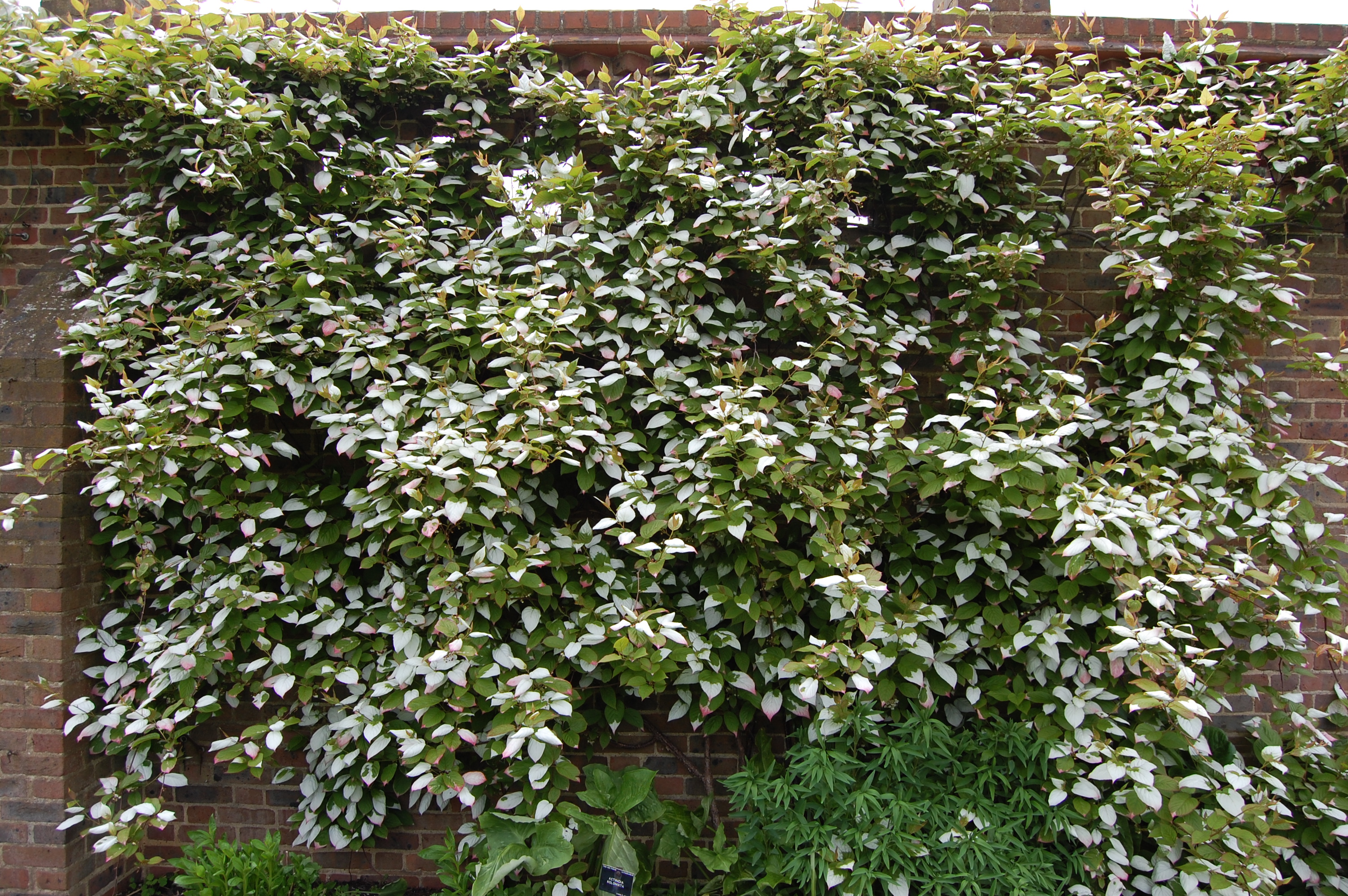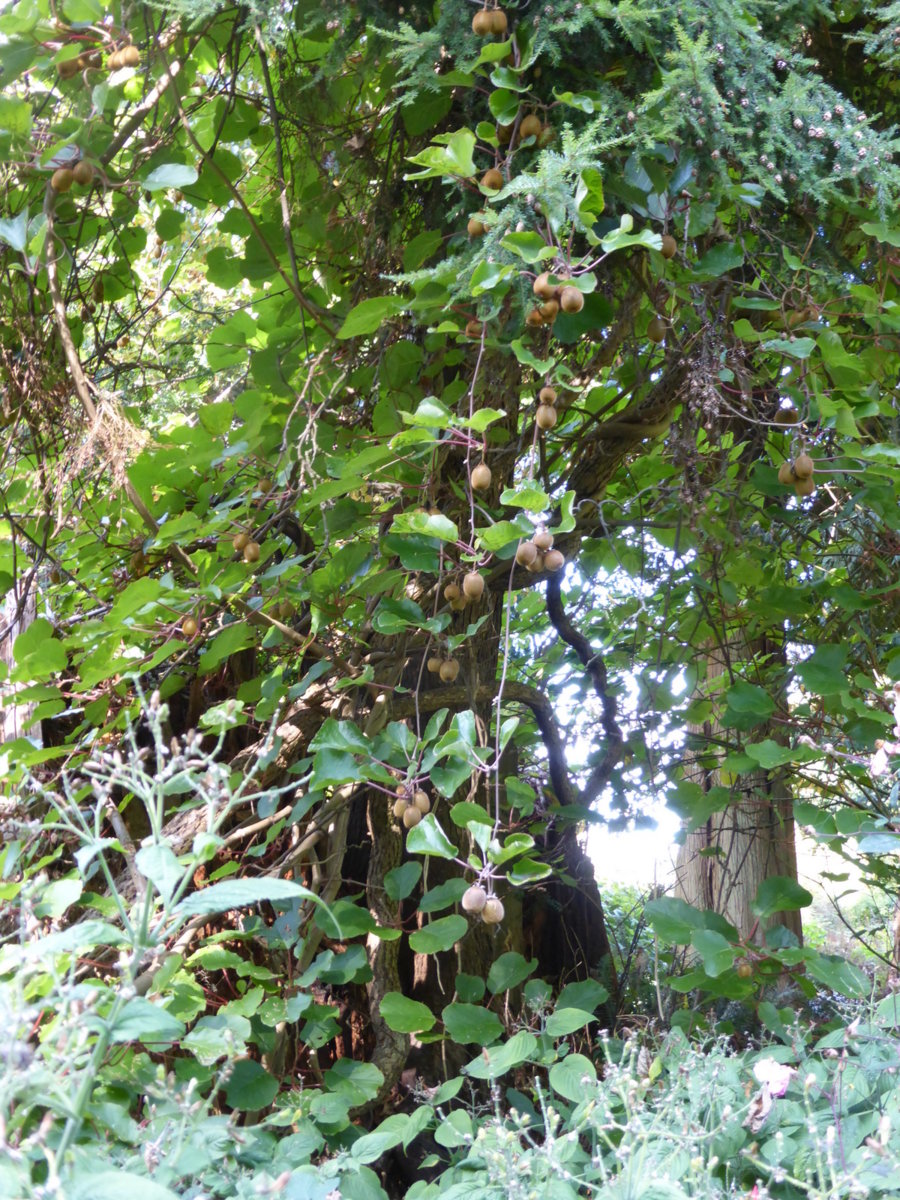Actinidia: features, types, nuances of planting, care and reproduction (20 photos)
Content
The household plot constantly requires attention - it needs to be looked after, it needs to be ennobled, it is necessary to tinker with it. The selection of plants for him is an important aspect, which is indispensable in the country. Among the fruit trees and ornamental shrubs that make the area aesthetic, creeping plants stand out, among which actinidia is one of the most beautiful and unusual middle lianas.
Features and benefits of actinidia
There are few plants that can be planted in the garden in Russian latitudes, and not be afraid that they will die in winter. An even smaller number of species is not only adapted for a long wintering, but also has an aesthetic appearance, so valuable for gardeners.
Actinidia is a peculiar exception, which stands out for a number of advantages.
Appearance
Actinidia is a creeping plant with thin heart-shaped leaves with a sharp or even edge. In the summer, they have a deep green color, in the fall their shades become more diverse: there are yellow, red, orange varieties. There is a variety whose leaf tips have a pale silver tint. As a result, the wall braided by actinidia becomes a real decoration of the site.
Fruit
Actinidia is able to actively bear fruit, and its fruits are quite edible for humans. Those who have tried them compare them with an apple and pineapple; from the fruits you can make jam, prepare tincture and tea on them, or eat them just like that. They are rich in vitamin C, have a good effect on digestion and taste good.
Easy to grow and care
Actinidia begins to bear fruit at the age of seven and continues for more than forty. It is unpretentious, easily tolerates a lack of sun, survives the winter without additional shelter. The only thing the plant needs is timely watering. Otherwise, taking care of actinidia at home is very simple - for the most part, it just needs to not interfere with growth.
Security
Unlike many lianas, actinidia is completely safe for the buildings on which it will curl. She has no aerial roots and she does not try to get into the cracks, if you give her an alternative.
Actinidia has many species, easily propagated at home, does not require special care and looks good - ideal for ennoblement of the site. The only difficulty that may arise with it is the need to have both female and male plants on the site.
Actinidia is dioecious and will not bear fruit until pollination occurs.
Common species
There are three main groups on which it depends on how actinidia will look, how high it will grow and what specific form it will have.
Actinidia Argument (Actinidia Far Eastern)
The most powerful of all cultivated species, reaches a height of up to 30 meters. The trunk is up to 20 in diameter, leaves up to 15 cm long. They are ovoid in shape, pointed, with small denticles. The flowers are white, fragrant, collected in inflorescences.Actinidia argument has subspecies:
- self-fertile - resistant to cold, ripens late in September;
- seaside - worse survives the cold, resistant to diseases and pests;
- large-fruited - resistant not only to cold weather, but also to drought.
Actinidia colomictus
Most other varieties are resistant to cold. It reaches 10 meters in height, the trunk diameter is 2 cm. The leaves reach 15 cm, their petioles are reddish, orange veins can be seen along the veins. The top of the leaf in male plants turns white by July, then pale pink, and by autumn - dark red. The flowers are white, fragrant, solitary on female vines, on male vines collected in inflorescences. Colinict actinidia has subspecies:
- pineapple actinidia - one of the most productive varieties, berries with a pineapple flavor, which is why the name appeared;
- Dr. Shimanovsky - one of the most colorful and beautiful leaves;
- Gourmet - large fruits that ripen in the summer.
Actinidia polygamum
It almost looks like actinidia colomictus, only smaller. It reaches a height of 5 meters, the trunk is up to 2 cm in diameter. The leaves are elongated longer than other varieties, have silver spots, do not redden in the fall, but turn yellow. The flowers are white. Has subspecies:
- apricot - ripens late, resistant to cold;
- beauty - has very fragrant fruits;
- patterned - also ripens late, the fruits taste like figs.
Actinidia purpurea (Chinese actinidia)
It grows well in the shade, bears fruit abundantly in late September. It does not tolerate cold. The fruits are bright, purple, which is why the variety got its name.
Actinidia hybrid
Variety obtained by crossing purple garden with argut. It is resistant to cold, the fruits are large, flowering is plentiful.
It is not difficult to choose which actinidia to plant - it is good enough to represent the climate and the desired yield.
Landing Nuances
For actinidia to grow well, you need to not only take good care of it, but also properly plant it. There are three main seasons when possible:
- early spring, when the snow had just come down and the juices had not yet begun to move;
- late spring, when most plants have already bloomed;
- mid-autumn, when about a month is still left until frost.
Choosing a suitable place should be guided by the following principles:
Drainage
Actinidia prefers dry soils in which water does not linger. If on the site groundwater lies close to the surface, actinidia will have to be planted in a specially poured hill.
Light and shadow
Actinidia seedlings tolerate shade well, but they will bear fruit only if they receive enough sun. The best option is a place where the sun's rays are bright until noon, in the sultry afternoon hours the shadow reigns.
Props
Caring for actinidia implies mandatory presence of supports - it can be a wall of the house (but it will be necessary to pull the ropes so that the plant can climb them), a patterned gazebo, forged or wooden fence. You can make special supports for actinidia by pulling a thick wire between the columns dug into the ground.
Distance
Caring for actinidia implies the presence of space between seedlings - they should be located no closer than a meter from each other.
Neighbors
There is a list of plants that will have the most beneficial effect on the soil for actinidia, but there are those that will not be the best neighbors.
- well - legumes, blackcurrant, hazel;
- bad - fruit trees.
Actinidia planting itself in spring or autumn should take place in several stages:
- dig holes, fill them with a drainage layer of broken brick;
- make fertile soil and mineral fertilizers - they should not contain chlorine;
- wait half a month;
- pour a hill of soil on the settled ground, place actinidia on top so that the roots are flush with the ground;
- bury, pour two or three buckets of water, cover with a damp cloth and hold until the plant has taken root.
It is important to remember that it is easiest to grow actinidia from a young (2-3 years old) seedling - older plants are best not to transplant, they do not tolerate it well. In this case, the seedling should be healthy, strong, devoid of traces of rot or degeneration. For every three women, one male must be accounted for, and it must be ensured that they are of the same species.
If everything is done correctly, actinidia will quickly take root and after 3-4 years will begin to bear fruit.
The nuances of care
Caring for actinidia does not require any special knowledge. It is enough to carry out the following procedures:
- Watering. Every morning and every evening you need to spray the leaves of the plant, simulating rain, in dry weather this will help actinidia to remain in good condition. If a real drought occurs, you need to moisten the soil around the plant every week, pouring up to 10 buckets of water at a time on it.
- Loosening. From time to time, you need to loosen the soil at the roots of the plant - carefully, shallowly, but often, while removing growing weeds.
- Fertilizers Actinidia needs to be fertilized from time to time. They are fed with mineral fertilizers: nitrogen, phosphorus and potassium. It is important that actinidia top dressing does not contain chlorine - its presence will adversely affect the plant.
- Pruning. It is held in the summer when there are a lot of grown seedlings, and they have already taken root enough. It is necessary to remove the branches, forming a more sparse beautiful crown - this will allow the plant to bear fruit freely and receive enough light.
- Harvesting. It should be carried out when the fruits ripen, with sufficient accuracy. After the season is over, you need to buy fertilizers, than to feed actinidia for a quiet wintering.
- Winter. Very young seedlings that have been planted recently should be removed from the support and covered with spruce branches along with dry leaves. Adult actinidia can winter without shelter.
Actinidia diseases are sometimes found, which also need to be corrected, but this rarely happens and it is usually enough to simply remove the infected shoots of cultivated seedlings.
The nuances of reproduction
Reproduction of actinidia is a simple science. Anyone who knows how to plant actinidia is definitely smart enough to master it.
The main thing to remember in the process is that the sex of the plant is inherited. Therefore, taking an escape from a female plant, you can get female plants that will not bear fruit without male ones.
There are several ways in which actinidia reproduce.
Arc lay
The easiest way in which you can propagate actinidia. It is enough in the spring to choose a young shoot, bend it to the ground and, having fixed it, sprinkle it with soil. Water, fertilize, and soon a young plant will emerge from the mound, which can be transplanted or left next to the mother.
Cuttings
This is the method that gives the largest number of seedlings by results. Spend it in June, when actinidia gives new shoots that have not yet had time to become rougher. They are cut off, lowered into a vessel with water, and then divided into small sections of 15 cm. Each segment is planted on neutral soil at an angle of 60 degrees. Bury so that half the cuttings remain above the ground. After the ground is covered in two layers with wet gauze. It needs to be sprayed with water several times a day so that it does not dry out. Two weeks later, gauze is removed. By winter, cuttings are covered with dry foliage. In the spring they plant it, and from transplanted segments a full-fledged fruit actinidia is obtained.
Seeds
To get the result, you need to know exactly how to care and how to grow them. The complexities of this method by which actinidia propagation can take place begin with the process of seed extraction. It is necessary to stretch the berries, put them in a linen bag and rinse under running water. Remove seeds, dry in the shade and leave to store until planted.
Reproduction of actinidia does not require much effort than the process of growing and caring for it.The result is always on top: a chic green and silver liana can become an ornament of any site.
